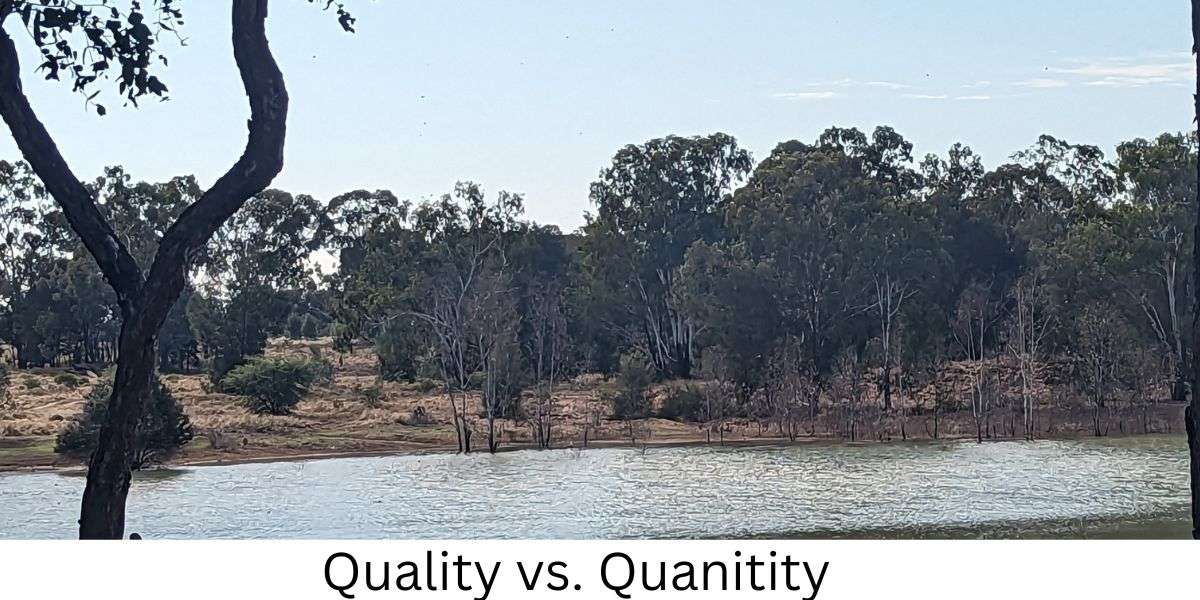What is Quality and who are you writing for?”
We know that quality is important. But do we need some quantity to make our business take off, whether that be a blog, website, product, social media profile, or even a YouTube channel?
The bigger question is, how do you determine whether your content is quality?
According to the dictionary, quality is
“the standard of something as measured against other things of a similar kind; the degree of excellence of something.
a distinctive attribute or characteristic possessed by someone or something.“
Quality blog content is therefore often measured against our competitor’s content standards.
However, it can be argued that, like beauty, quality is in the eye of the beholder and interpreted by interaction with others.
I believe that if the content helps people and answers all their concerns, and they can relate to the creator it can be determined as quality even if it is not perfect in every way.
There are many sayings you hear including ‘content is king’, ‘pillar posts’, and ‘epic content’.
I often wonder if, in our attempts to be ‘the best of the best’ and create awesome content, we set ourselves targets that we cannot reach and fail to deliver anything of real value.
Should we obsess about the quality or provide content to an acceptable standard?
Many people now promote that quality is about producing thorough content that answers every question or solves the problem a user is looking for.
In creating blog posts it is suggested that we aim for 2,000 words minimum on most topics.
There may be circumstances where shorter posts are acceptable but producing content that is longer than the competition is said to increase the chances of the content being determined as better quality.
This is often quoted concerning the quality as seen by the search engines to drive traffic to your website, but is that real quality?
What about quality as seen by humans?
Have you ever read an article while trying to gather information and found it was just so long with links going everywhere that you just couldn’t make head or tail of it? Did you find your problem solved or did you just have more questions?
Sometimes, I think long content created to appease the search engines does not create a great user experience.
Many posts are created to show the search engines that it covers every possible detail, but is that a great user experience?
Is this giving people another reason to move away from the written word and look for content in a video instead?
How often should you create content?
There are many schools of thought on the number of times a week you should create new pieces of content without affecting the quality of your work.
I built this blog slowly and reached 100 posts over two years. I found that the search engines pretty well ignored me as I did not get many page views.
Is this because I did not post enough, or because my content is not considered quality by Google? I believe both to be true.
I evaluated the quality of this blog. Rewriting this and every other post and deleting many was a result of my findings.
In theory, updating old content and improving the quality is a good SEO practice and one I am continuously working on.
I find when reading content, that I prefer a standard that I can relate to rather than quality as determined by the search engines. I aim to keep my posts relatable.
What about quality and quantity on social media?
I have spent so much time online, trying to find relevant information to help me determine the future of my blog.
One thing that has become clear, (whether you are creating a blog, social media profile, or even a YouTube channel,) is that all your old content remains available for others to see.
As you build a larger quantity of content and get traffic from social media, you automatically start to build authority and this, in turn, shows the search engines you have some standard of quality by the interaction with others.
As you build a social media following that resonates with you, you should be able to drive traffic to your website especially if you do so to provide information rather than in a money-making attempt.
I have been skeptical of email lists because most are written to try and sell products, but if you do have an active list it is possible to use email to gain traffic to either a blog or YouTube channel to get views on your content.
The purpose of headings – to help people scan
Do you find when reading that you tend to scan great sections of text thinking more of the same – where is the answer I am looking for?
Then something hits the eye and you start to read.
Short and simple blog posts that quickly answer a question can sometimes be a better user experience than long-winded ones.
However, there is a difference between long-winded and lots of valuable information that is easy to scan.
Keeping Readers on the page.
We do like to keep our readers on the page longer believing that this shows that people enjoy our content.
Adding video can keep people on your page without adding heaps of fluff text. Some people prefer video to text.
What about the quality of images and video?
Quality and quantity are also important when it comes to videos and photos both on the website, on social media, and on YouTube.
Quality images can mean a simple screenshot that shows an example, an infographic that is good enough to be shared, and images that are relevant to the topic.
Quality video does not mean movie quality. It means good lighting, sound, picture, and manuscript.
What do you think? Should we take more time to ensure our content is primarily for people?
KerryAnn
